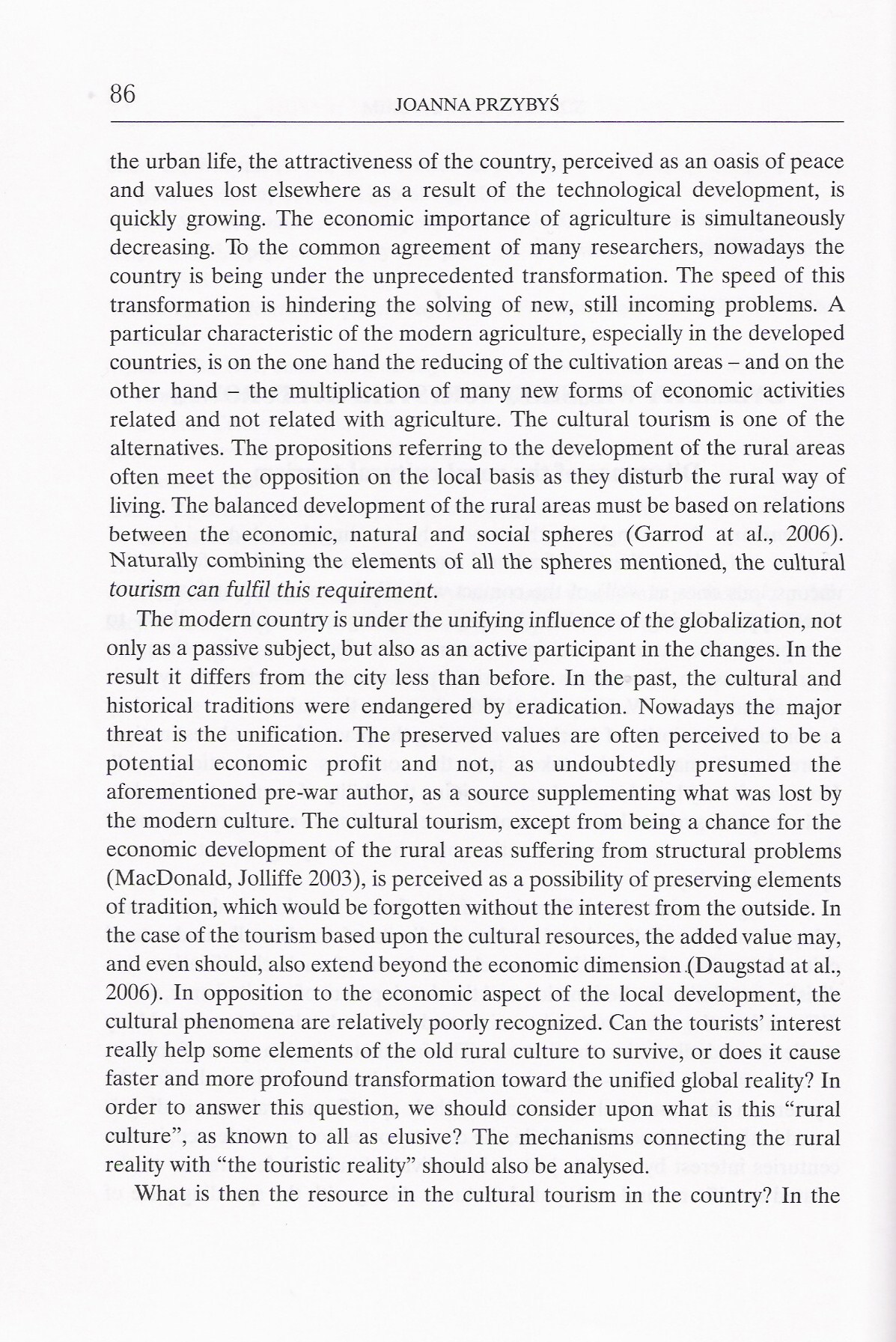skanuj0083 (21)

86
JOANNA PRZYBYŚ
the urban life, the attractiveness of the country, perceived as an oasis of peace and values lost elsewhere as a result of the technological development, is ąuickly growing. The economic importance of agriculture is simultaneously decreasing. To the common agreement of many researchers, nowadays the country is being under the unprecedented transformation. The speed of this transformation is hindering the solving of new, still incoming problems. A particular characteristic of the modem agriculture, especially in the developed countries, is on the one hand the reducing of the cultivation areas - and on the other hand - the multiplication of many new forms of economic activities related and not related with agriculture. The cultural tourism is one of the alternatives. The propositions referring to the development of the rural areas often meet the opposition on the local basis as they disturb the rural way of living. The balanced development of the rural areas must be based on relations between the economic, natural and social spheres (Garrod at al., 2006). Naturally combtning the elements of all the spheres mentioned, the cultural tourism can fulfil this reąuirement.
The modem country is under the unifying influence of the globalization, not only as a passive subject, but also as an active participant in the changes. In the result it differs from the city less than before. In the past, the cultural and historical traditions were endangered by eradication. Nowadays the major threat is the unification. The preserved values are often perceived to be a potential economic profit and not, as undoubtedly presumed the aforementioned pre-war author, as a source supplementing what was lost by the modem culture. The cultural tourism, except from being a chance for the economic development of the rural areas suffering from structural problems (MacDonald, Jolliffe 2003), is perceived as a possibility of preserving elements of tradition, which would be forgotten without the interest from the outside. In the case of the tourism based upon the cultural resources, the added value may, and even should, also extend beyond the economic dimension.(Daugstad at al., 2006). In opposition to the economic aspect of the local development, the cultural phenomena are relatively poorly recognized. Can the tourists’ interest really help some elements of the old rural culture to survive, or does it cause faster and morę profound transformation toward the unified global reality? In order to answer this question, we should consider upon what is this “rural culture”, as known to all as elusive? The mechanisms connecting the mral reality with “the touristic reahty” should also be analysed.
What is then the resource in the cultural tourism in the country? In the
Wyszukiwarka
Podobne podstrony:
35592 skanuj0085 (21) 88 JOANNA PRZYBYŚ środowisko przyrodnicze (zob. też Małek 2003). Tymczasem wie
59467 skanuj0113 (14) 116 JOANNA PRZYBYŚ Howard P., Pinder D., 2003, Cultural heritage and sustainab
skanuj0093 (19) 96 JOANNA PRZYBYŚ na zachowanie walorów kultury, folklor istnieje tylko wtedy, gdy j
skanuj0089 (20) 92 JOANNA PRZYBYŚ Oczywistą cechą historycznych opisów wsi, które ukształtowały ocze
więcej podobnych podstron